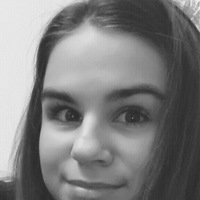
Функция спроса населения на данный товар Qd = 7 – P. Функция предложения данного товара Qs = -5 +
2P, где Qd и Qs - соответственно объем спроса и объем предложения в млн. шт. в год, Р – цена в тыс. рублей. Определить равновесную цену и равновесный объем продаж. Предположим, что на товар установлена фиксированная цена на уровне 1) 5 тыс. рублей за единицу; 2) 3 тыс. рублей за единицу. Проанализировать полученные результаты. В каком из указанных случаев объем потребления будет наибольшим? 0
0
 0
0
Ответы на вопрос
 Внимание! Ответы на вопросы дают живые люди. Они могут содержать ошибочную информацию, заблуждения, а также ответы могут быть сгенерированы нейросетями. Будьте внимательны. Если вы уверены, что ответ неверный, нажмите кнопку "Пожаловаться" под ответом.
Внимание! Ответы на вопросы дают живые люди. Они могут содержать ошибочную информацию, заблуждения, а также ответы могут быть сгенерированы нейросетями. Будьте внимательны. Если вы уверены, что ответ неверный, нажмите кнопку "Пожаловаться" под ответом.

Для того, чтобы найти Q0 и P0 , нужно приравнять два уравнения:
7 – Р = -5 + 2Р, т. к. условием равновесия является Qd = Qs = Q0
3Р=12
Р0 = 4 - равновесная цена
Подставляя цену в функцию спроса и функцию предложения, получаем равновесный объём.
7-4=-5+2*4
Q0 = 3 ед. – равновесное количество
Если государство установит цену 3 ден. ед., т.е. P = 3
Qd =7-P =7-3=4
Qs =-5+2Р =-5+2*3=1
Qd > Qs, т. е. объем спроса будет превышать объем предложения и возникнет дефицит данного товара в размере: 4-1 =3.
 0
0
 0
0

Equilibrium Price and Quantity Calculation
To determine the equilibrium price and quantity, we need to set the quantity demanded (Qd) equal to the quantity supplied (Qs) and solve for the price (P).
Given the demand function Qd = 7 - P and the supply function Qs = -5 + 2P, we can set them equal to each other:
7 - P = -5 + 2P
Now, let's solve for P:
7 + 5 = 2P + P
12 = 3P
P = 12/3
P = 4
So, the equilibrium price is 4 thousand rubles per unit.
To find the equilibrium quantity, we substitute the equilibrium price (P) into either the demand or supply function. Let's use the demand function:
Qd = 7 - P
Qd = 7 - 4
Qd = 3
Therefore, the equilibrium quantity is 3 million units per year.
Analysis of Results
Now, let's analyze the results for the two given cases:
1) If the fixed price is set at 5 thousand rubles per unit: - The equilibrium price is 4 thousand rubles per unit, which is lower than the fixed price. - The equilibrium quantity is 3 million units per year. - Since the fixed price is higher than the equilibrium price, there will be excess supply in the market. This means that suppliers will be willing to supply more than what consumers are willing to buy at that price.
2) If the fixed price is set at 3 thousand rubles per unit: - The equilibrium price is 4 thousand rubles per unit, which is higher than the fixed price. - The equilibrium quantity is 3 million units per year. - Since the fixed price is lower than the equilibrium price, there will be excess demand in the market. This means that consumers will be willing to buy more than what suppliers are willing to supply at that price.
In both cases, the equilibrium quantity remains the same at 3 million units per year. However, the first case (fixed price of 5 thousand rubles per unit) results in excess supply, while the second case (fixed price of 3 thousand rubles per unit) results in excess demand.
Maximum Consumption Volume
To determine the case with the highest consumption volume, we need to consider the equilibrium quantity. Since the equilibrium quantity is the same in both cases (3 million units per year), the volume of consumption will also be the same. Therefore, the volume of consumption will be the highest in both cases.
In conclusion, the volume of consumption will be the highest in both cases, regardless of the fixed price set for the product.
 0
0
 0
0
Последние заданные вопросы в категории Экономика
-
Математика
-
Литература
-
Алгебра
-
Русский язык
-
Геометрия
-
Английский язык
-
Химия
-
Физика
-
Биология
-
Другие предметы
-
История
-
Обществознание
-
Окружающий мир
-
География
-
Українська мова
-
Информатика
-
Українська література
-
Қазақ тiлi
-
Экономика
-
Музыка
-
Право
-
Беларуская мова
-
Французский язык
-
Немецкий язык
-
МХК
-
ОБЖ
-
Психология
-
Физкультура и спорт
-
Астрономия
-
Кыргыз тили
-
Оʻzbek tili











